Development of electric construction machinery in China: a review of key technologies and future directions*
Zhe-ming TONG, Jia-zhi MIAO, Yuan-song LI, Shui-guang TONG†‡1,, Qian ZHANG, Gui-rong TAN
Development of electric construction machinery in China: a review of key technologies and future directions*
Zhe-ming TONG†1,2, Jia-zhi MIAO2, Yuan-song LI3, Shui-guang TONG†‡1,2, Qian ZHANG4, Gui-rong TAN5
State Key Laboratory of Fluid Power and Mechatronic Systems, Zhejiang University, Hangzhou 310027, China School of Mechanical Engineering, Zhejiang University, Hangzhou 310027, China China Academy of Machinery Science and Technology Group Co., Ltd., Beijing 100044, China Guangxi Yuchai Machinery Group Co., Ltd., Yulin 537005, China †E-mail: tzm@zju.edu.cn; cetongsg@zju.edu.cn
The issues of energy shortage and environmental pollution have accelerated the electrification of construction machinery (CM) industry globally. In China, the amount of electric construction machinery (ECM) has been growing across the industry. The sales of ECM are estimated to reach 600 000 vehicles by the end of 2025, while the total demand for battery power will reach 60 GWh. However, the development of ECM still faces critical challenges including reliable power supply and energy distribution among various components. In this review, we primarily focus on important technological breakthroughs and the difficulties faced by the CM industry in China. An overview of ECM including classification and characteristics is given at the beginning. Next, the selection of key components such as the electric motor and the energy storage units, and the control strategy in the pure electric drive system are discussed. The characteristics of the hybrid electric drive system such as structure design and power matching are analyzed in detail. The battery management system (BMS) is critical to ensure appropriate battery health for reliable power supply. Here, we extensively review technical developments in various BMSs. In addition, we roughly estimate the national total of CM emissions and the potential environmental benefits of employing ECMs in China. Finally, we set out future research directions and industrial development of ECM.
Construction machinery (CM); Electric drive system; Battery management system (BMS); Energy recovery; Electrification
1 Introduction
As global energy shortage and environmental pollution become increasingly prominent (Tong et al., 2021), many developed countries have planned bans on the sale of new petrol and diesel vehicles in favor of electric models. In China, a similar ban has also been put on the agenda by the Ministry of Industry and Information Technology. As a result of China’s rapid infrastructure development, construction machineries (CMs) (e.g. forklift, excavator, and crane) powered by fossil fuels have been widely used in many industries and have consumed a vast amount of energy, and significantly contributed to various environmental issues in China over the decades (Lin et al., 2017b; Tong ZM et al., 2019). In Table 1, CM sales and market share of the top 30 companies worldwide are summarized. Five Chinese CM manufacturers (XCMG, SANY, Zoomlion, LiuGong, and Lonking) account for 16.3% of the global market, with total construction equipment sales reaching $33 billion. From 2000 to 2019, CM sales in China have been growing steadily (Fig. 1a). The sales volume of CM, including excavator, loader, crane, road roller, bulldozer, land leveler, and paver, from 2006 to 2019 is presented in Fig. 1b. As of 2019, the total number of CMs in China was 8.86 million.
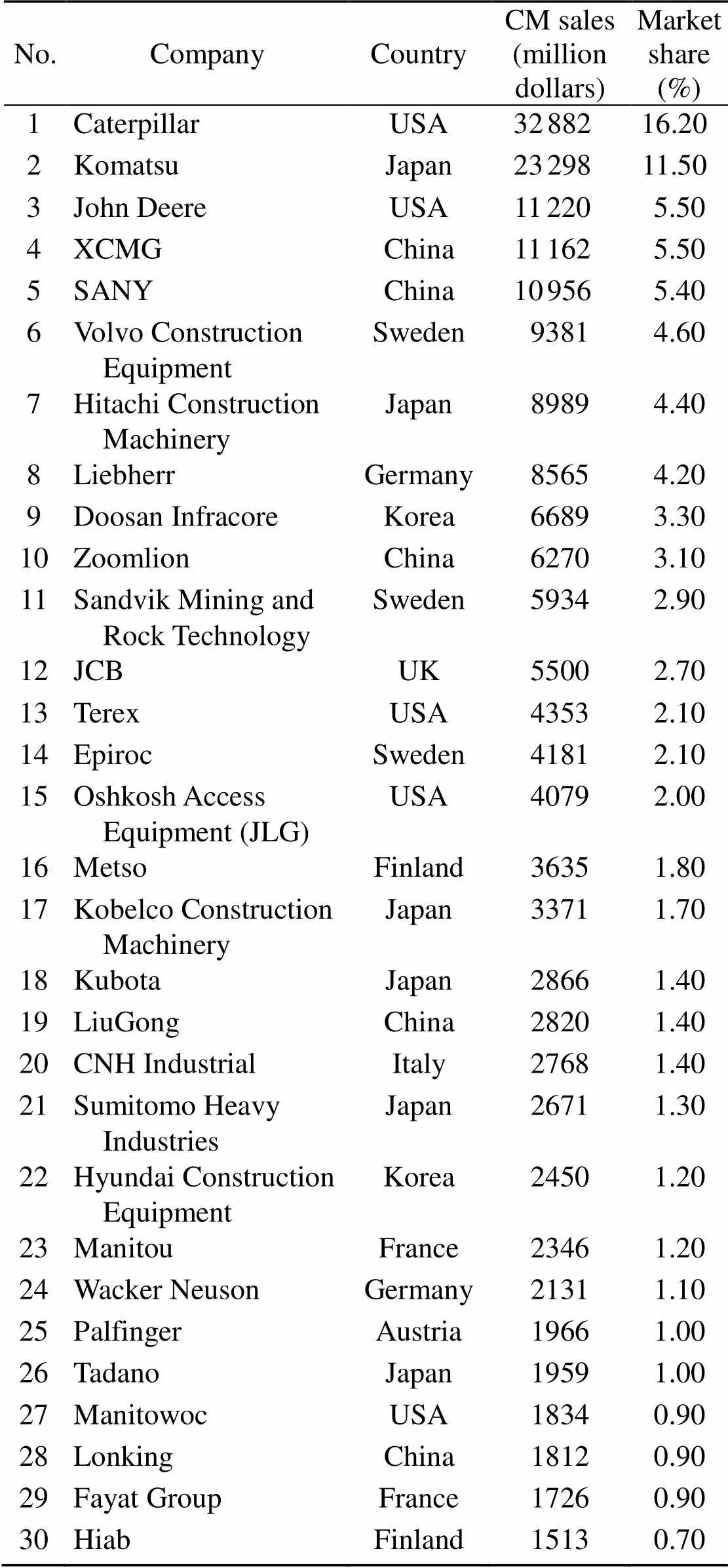
Table 1 CM sales and market share of the top 30 companies worldwide (KHL, 2020)
Electrification of CMs offers many benefits including emission reduction, decreased noise level, lowered operation cost, and improved safety. The energy sources for CMs have been gradually shifting from fossil fuels to clean and renewable energy. As battery technology has matured and costs have dropped, many manufacturers in developed countries have been developing and releasing electric and hybrid CM models (Table 2). For example, Volvo Construction Equipment (Volvo CE) started to focus on compact all-electric CMs without large power demand. They released several models of electric excavators (ECR25, EC55, and EC230) and wheel loaders (L25H) between 2019 and 2020. Doosan Bobcat announced its first fully battery-powered mini- excavator (E10e) in 2019 and entered the European and USA markets with success. Caterpillar has introduced both all-electric and diesel-electric models in recent years, including the world’s first large-scale 25-t all-electric excavator (323F Z-line) with a 300 kWh battery pack, a diesel-electric wheel loader (988K XE) that utilizes a highly efficient generator- invertor-motor electric drive to replace the torque converter and transmission, and an electric load-haul- dump (R1700 XE LHD) for underground mining, bringing benefits including the need for less ventilation infrastructure, emission reduction, less heat generation, and lower operating costs. Komatsu has followed the electrification trend in the CM industry closely and it has a long history in hybrid CM technologies. The company released the world’s first hybrid 20-t hydraulic excavator (PC200-8E0) back in 2008. By the end of 2016, the global sales of Komatsu’s hybrid CM had hit nearly 4000 units. Different from conventional hybrid systems, the Komatsu hybrid electrical system consists of three main components: an electric generator motor, an electric swing motor generator, and an ultra-capacitor with inverter. In 2020, Komatsu launched a new all- electric mini excavator (PC30E-5) in the Japanese market based on its existing expertise of hybrid CM.
In China, electric construction machinery (ECM) has been rapidly developed by major Chinese CM manufacturers since 2015. For example, XCMG has designed different types of CM, such as the electric forklift, electric loader, and electric excavator, and the usage cost of their electric excavator is 60% less than that of a traditional excavator. In 2019, SANY proposed a pure electric port tractor that can be driven for 120 km on one charge. In 2020, Zoomlion produced the world’s first 25-t pure electric automobile crane, which uses a LiFePO4battery. LiuGong has applied quick-charge technology to CMs (electric loader and electric excavator), and their batteries can be charged to 80% capacity within 1 h. We have summarized the main ECM products from the top manufacturers in Table 2.
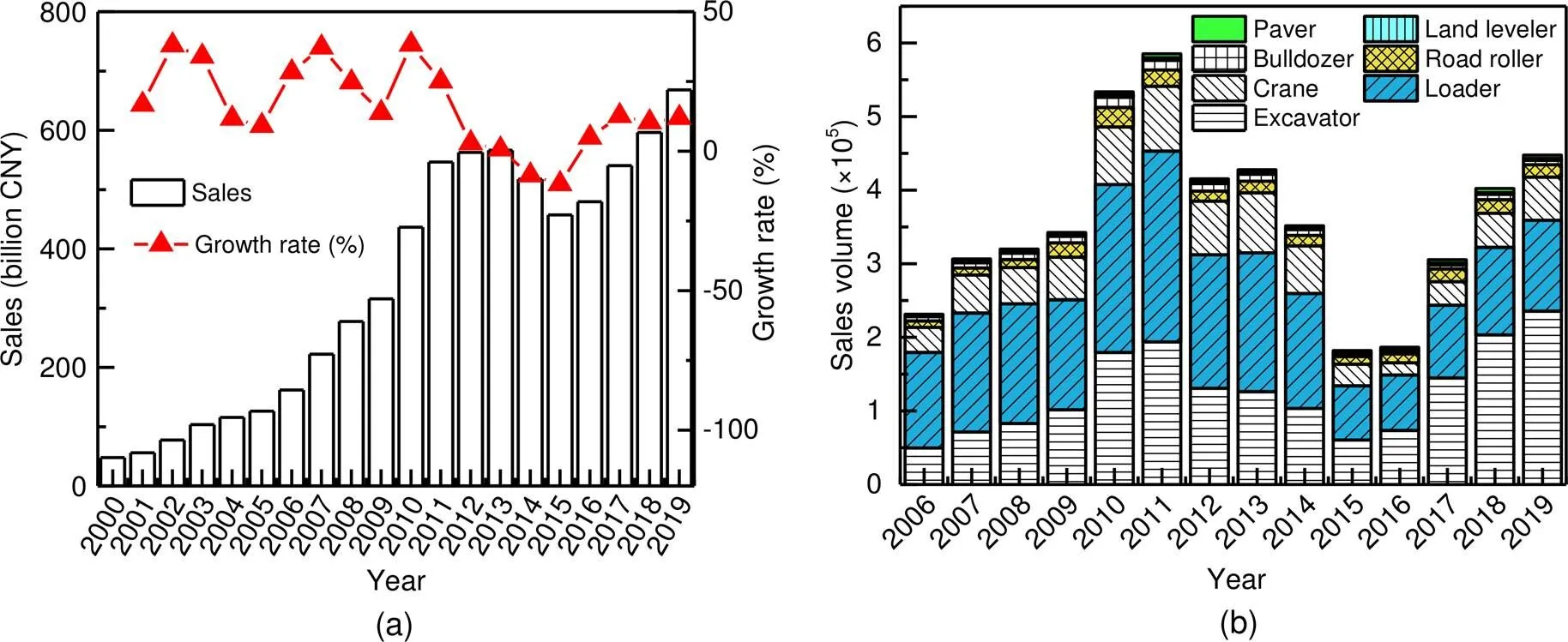
Fig. 1 CM sales and growth rate in China from 2000 to 2019 (a) and CM sales volume by CM type in China from 2006 to 2019 (b) (data source: China Construction Machinery Association)
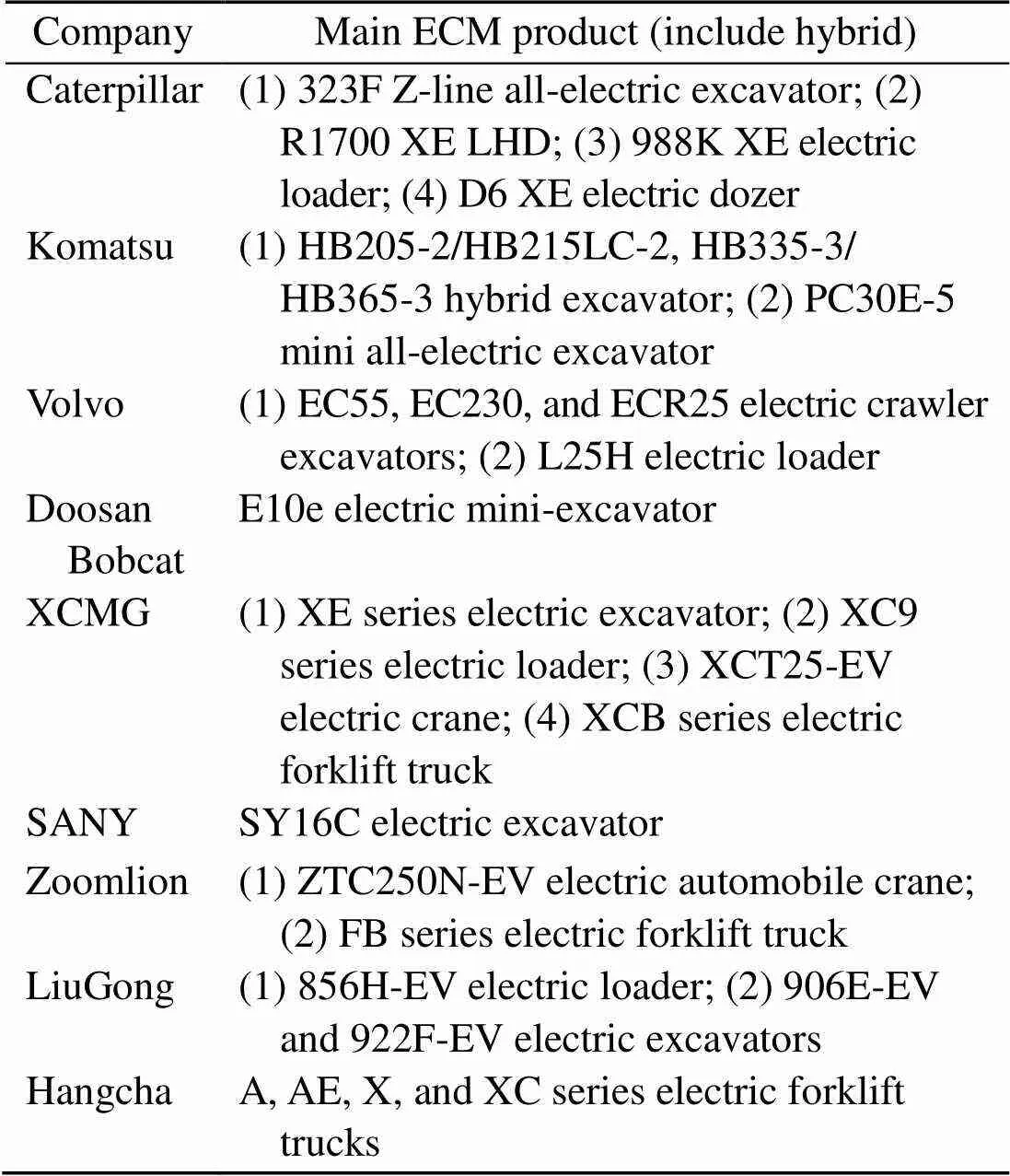
Table 2 Main ECM products (include hybrid) from top global CM manufacturers
ECMs include electric excavators, electric wheel loaders, electric forklifts, electric bulldozers, electric cranes, and electric road rollers (Fig. 2). They are widely operated in various engineering applications and are critical for infrastructure development and manufacturing industry. The most common operating characteristic of an ECM is frequent starting and braking (e.g. the electric wheel loader and electric forklift) and the hauling of heavy cargo (e.g. electric excavator and electric forklift). Therefore, the recovery of gravitational potential energy and swing brake energy is beneficial for achieving higher energy efficiency for many kinds of CM (Filla, 2009; Ovrum and Bergh, 2015; Lin et al., 2017b). Lin et al. (2016) found that the motor-generator unit is more suitable for energy recovery from an excavator than is the accumulator-motor-generator unit. Wang et al. (2016) developed a model predictive controller (MPC) control method for saving the energy of the hybrid electric tracked bulldozer. Simulation technology is used to compare the relative performances of the dynamic programming method and the rule-based control method. Antonelli et al. (2017) designed an energy regeneration system (ERS) to recover the energy of rubber-tired gantry (RTG) cranes to an ultra-capacitor. Minav et al. (2012b) developed an energy regeneration unit used in the lifting system of an electro- hydraulic forklift. The energy regeneration unit is combined with an electric servo motor and a hydraulic pump. Compared to other kinds of CM, the zero- emission pure electric forklift is the best choice for indoor operations (Tong et al., 2018). In addition, it is also important to note the customized design of ECM for special engineering projects.
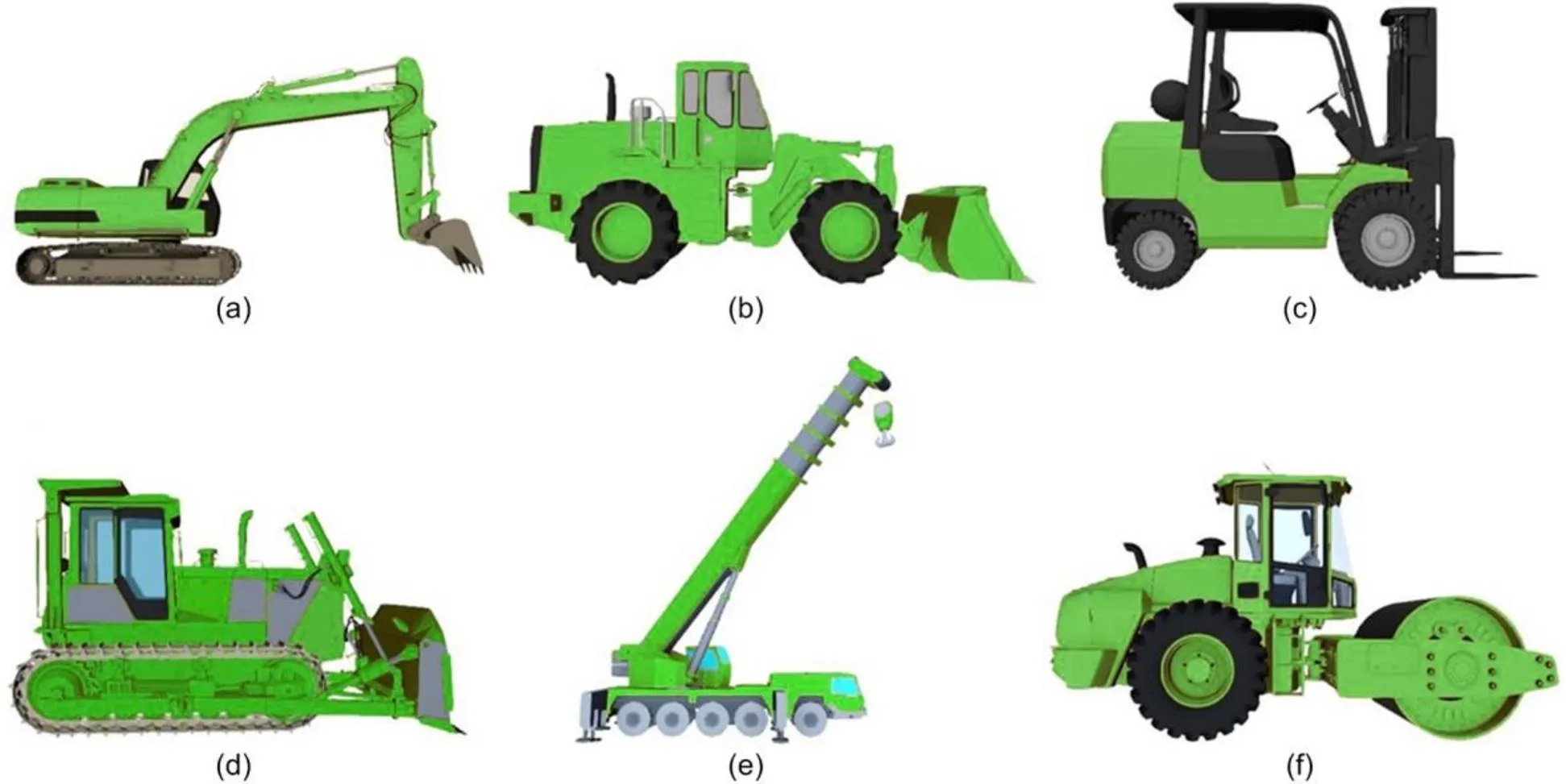
Fig. 2 Typical ECM types
(a) Electric excavator; (b) Electric wheel loader; (c) Electric forklift truck; (d) Electric bulldozer; (e) Electric automobile crane; (f) Electric road roller
Electrification has been widely applied to passenger vehicles (Tie and Tan, 2013; Xiong et al., 2014) and has been shown capable of reducing emissions significantly without sacrificing performance. The experience gained from the automotive industry can be utilized to accelerate the development of ECMs. Nowadays, CMs can be used in various operating environments. However, the ECM has still only just entered the exploratory stage. We summarize the most significant differences between the utilization of CM equipment and passenger vehicles:
1. Application scenarios: CM is usually operated in hazardous environments, including hot and humid environments, alpine areas, and dirty and dusty environments. These conditions require that both the electrical system and power source have a robust and adaptive capacity. In contrast, passenger vehicles typically are operated under more favorable circumstances, with comparatively simple requirements for the electrical system and battery (He and Jiang, 2018).
2. Operating conditions: In contrast with electric vehicles, ECMs (e.g. the dump truck, tractor, and mine truck) require a significantly greater amount of power due to their large volume, heavy weight, and extreme load. Further, CM has an extremely broad range of power requirements depending on its operating state (Wang et al., 2017). This means CM needs a robust energy management system to ensure stable energy output and rapid shift between different operating modes. CM is focused on load capability whereas the focus of the passenger vehicle is on mobility.
3. Mechanical construction: CM has more components and thus has more complicated structures than passenger vehicles and thus has additional major engineering requirements in addition to being driven. For example, in contrast to passenger vehicles, the forklift truck has an extra lifting system, which usually consists of a forklift mast, a heavy fork, and a hydraulic system. The hydraulic system contains the components of the reversing valve, pump, and pipe. Furthermore, the excavator has a more complicated lifting mechanism that combines the boom, bucket rod, rocker, connecting rod, bucket, and oil cylinder. To meet its engineering requirements, a rotary system is also required based on the rotary motor, reversing valve, and pipe for the excavator.
As mentioned previously, there are still many unsolved technological problems in the development of ECMs, namely: (1) structural design of the electric system; (2) matching of power parameters; (3) energy distribution and recovery; (4) battery management. This paper aims at providing a comprehensive review of recent progress in ECM development in China and pointing out the benefits and challenges as the ECM market grows. The paper is divided into six sections and is organized as follows: Section 2 discusses the characteristics and key technologies of the pure electric drive system (PEDS). Section 3 describes the structure and power matching technology of the hybrid electric drive system (HEDS). Section 4 introduces the battery management system (BMS) and mainly focuses on battery prognostics and thermal management. Section 5 discusses the cost-benefit of ECM. Section 6 summarizes the current development of ECM and points out the challenges for future research.
2 Pure electric drive system (PEDS)
2.1 Characteristics of pure electric construction machinery (PECM)
The internal combustion engine (ICE) is replaced by an electric motor in PEDS, which makes the operation of PECM very smooth, with less noise and vibration compared with traditional-fuel construction machinery (TFCM) (Lin et al., 2020). Since PECM uses only electric energy as its power source, it can realize zero-emission operation. It has therefore been gradually applied to CMs such as those in forklift trucks and cranes. PECMs are especially welcome in indoor places where there are stringent requirements for emission and noise.
PEDS consists of two critical components: the energy storage unit (ESU) and the electric motor. Their functions correspond to the fuel tank and engine in the TFCM: (1) a store and supply for the energy source and (2) a drive for the CM. The key role in the ESU of TFCM is to monitor the state of fuel (e.g. temperature and flow conditions) (Cao et al., 2014). There are various types of energy storage units in PECM including a lead-acid battery, a supercapacitor, a flywheel or a lithium-ion battery (Hannan et al., 2017).

Table 3 Key characteristics of commonly used ESUs
For the power unit, the engine of a TFCM supplies power by turning chemical energy into mechanical energy. Fossil fuel is atomized and ignited in the combustion zone; the piston is pushed by combustion pressure, and its reciprocating force is transformed into rotary power by the crankshaft (Mourelatos, 2001). Energy is therefore wasted in overcoming friction and in the generation of noise and vibration (Miao et al., 2017; Tong SG et al., 2019). In comparison, the electric motor of PECM provides power by converting electric energy to mechanical energy (Ferreira and de Almeida, 2018). The rotor of the electric motor is driven by electromagnetic forces, and thus the electric motor can output rotary power. The maintenance cost of the electric motor is lower than that of ICE due to its simpler structure. In contrast to the engine, the electric motor produces less noise and vibration, and it can be smoothly operated with high efficiency. However, for some electric motors there still exist issues of high cost or low reliability.
2.1.1 Energy storage unit (ESU)
The ESU is significant as it ensures a reliable power output in CM. The classification of various types of ESUs is shown in Fig. 3 and these are widely applied in various CM applications. The most popular ESU includes fuel batteries (Hosseinzadeh et al., 2013), lithium batteries (Ge et al., 2018; Paul et al., 2020), a flywheel (Li et al., 2020), and an ultra- capacitor (Conte et al., 2014). The primary characteristics of several kinds of energy sources are included in Table 3 and classified in Fig. 4. Lithium batteries have excellent specific energy and energy density, which benefit the lightweight design of CM. In contrast, other kinds of units, like those powered by an ultra-capacitor, need a larger space and greater weight to realize the same level of energy supply. Considering the power demands of the different components in the system and their production costs, it is appropriate to combine lithium batteries with other kinds of ESUs (Fig. 3) to develop high-performance and reliable CM (Hsieh et al., 2016). Yi et al. (2018) utilized both fuel cells and batteries to develop ESU to support the electric motor of, for example, an excavator. Fuel cells have also been used as the main power source, and batteries have been used as an auxiliary power source to supplement them. Hosseinzadeh et al. (2013) adopted a hybrid ESU, including the proton exchange membrane fuel cell and a lead-acid battery, to optimize the performance of a forklift truck.

Fig. 3 Classification of ESU according to mechanism and composition materials
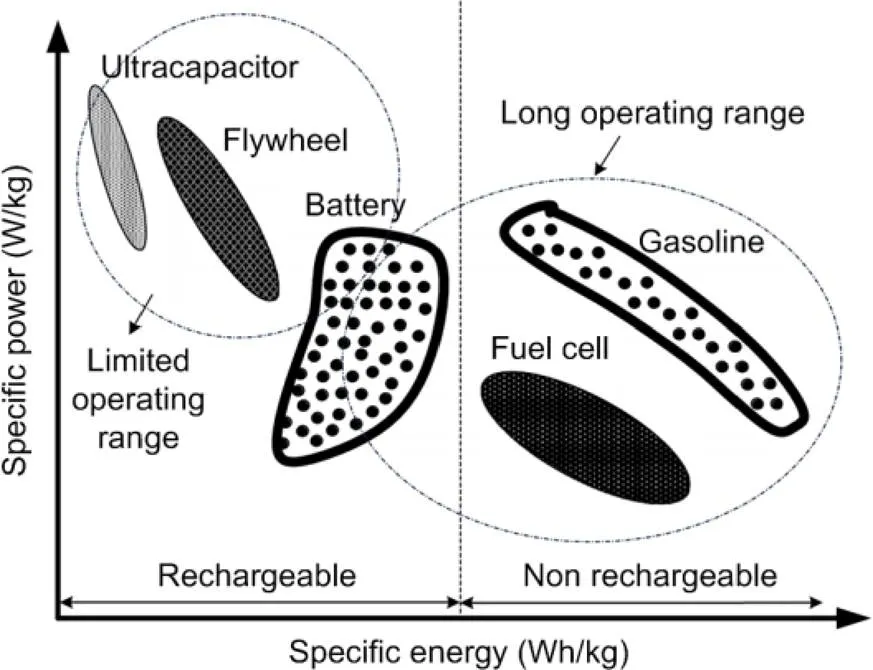
Fig. 4 Specific power vs specific energy characteristics for several normal energy sources. Reprinted from (Kumar and Jain, 2014), Copyright 2014, with permission from Elsevier
2.1.2 Electric motor
Electric motors can be broadly classified as direct current (DC) or alternating current (AC). Their more detailed classification is described in Fig. 5. Commonly used electric motors include the DC motor, the permanent magnet synchronous motor, the reluctance synchronous motor, and the asynchronous motor. However, the DC motor is not suitable for CM applications due to its complicated structure and unsatisfactory reliability. The reluctance synchronous motor can be applied to CM due to its low cost, high efficiency, and high torque density, and is fabricated without rare-earth materials (Boglietti et al., 2006). However, the noise and vibration caused by torque ripple and radial distortion limit the application of the reluctance synchronous motor. At present, asynchronous motors and permanent magnet synchronous motors are widely used in CMs. The asynchronous motor has a simple structure and thus achieves good reliability and low cost. The permanent magnet synchronous motor can only be utilized in a limited space due to its high-power density and torque density (Jacobs et al., 2009). One of the most important considerations in PEDS is to select a suitable type of electric motor that can support the entire electric system and operating conditions (Minav et al., 2012a). Ge et al. (2017) found that consumed power noticeably declined (from 2.05 kW to 0.70 kW) when the variable-frequency electric motor replaced the constant-speed electric motor, indicating the significance of selecting an appropriate electric motor for lowering energy consumption.

Fig. 5 Classification of the electric motor according to mechanism and composition materials
2.2 Structures and control strategy of PEDS
The PEDS combines multiple ESUs, an electric motor, and many components such as pumps and valves to achieve complicated functions. In this section, the pure electric hydraulic excavator is used to represent PECM in the examination of the structure and control strategy of PEDS. In Fig. 6, the PEDS of the pure electric hydraulic excavator is depicted in more detail. The main power is output from an electric motor and the variable pump is driven by the electric motor. The electric energy produced is converted to hydraulic energy through the electric motor and variable pump in this process. The mechanisms of the hydraulic excavator are driven by the hydraulic motor and controlled by multiple plunger pumps and reversing valves. Lin et al. (2017a) proposed a two-level idle speed control system that automatically controls the speed of the electric motor. The energy consumption saved is about 36.06% compared with a hydraulic excavator without idle speed control.
The control strategy aims to achieve good performance in fuel economy, emissions, cost, and drivability (Enang and Bannister, 2017). A classification of the commonly used control strategies is provided in Fig. 7 (p.253). In contrast to the optimization-based method, the rule-based method is simple to develop and has low computing cost (He and Jiang, 2018). Hosseinzadeh et al. (2013) utilized the Light, Fast, and Modifiable (LFM) simulation software to investigate the performance of two rule-based control strategies in an electric forklift. The ESU of the forklift was combined with a polymer electrolyte membrane (PEM) fuel cell and a lead-acid battery. The first strategy was based on average power consumption, while the second was based on maximum efficiency. The results showed that the first strategy had better performance due to its stable operating conditions. Ambühl et al. (2010) presented an explicit optimal control strategy for parallel hybrid electric powertrains. This rule-based map was used to express optimal control. Krasucki et al. (2009) proposed a two-level control method for a vehicle-mounted aerial work platform. The first layer was developed using the local classic proportional-integral-derivative (PID) controllers, while the second was based on a fuzzy logic controller. Sun et al. (2011) designed a new control algorithm that combined a logic threshold method and parameter optimization technology for heavy hybrid vehicles. The results indicated that the proposed algorithm had excellent performance and fuel economy.

Fig. 6 PEDS of a pure electric hydraulic excavator
(a) Structure of a pure electric hydraulic crawler excavator; (b) System composition of a pure electric hydraulic crawler excavator (reprinted from (Lin et al., 2020), Copyright 2020, with permission from Elsevier); (c) Structure of PEDS (reprinted from (Ge et al., 2017), Copyright 2017, with permission from Elsevier). EMC: electric motor controller; VCU: vehicle control unit; Descriptions of the variables in Fig. 6c refer to Ge et al. (2017)

Fig. 7 Classification of control strategy for electric vehicles (DP: dynamic programming)
2.3 Energy regeneration system (ERS)
Some CMs such as electric forklifts and electric excavators are usually equipped with extremely heavy mechanical structures (i.e. the boom and fork). The machine needs to supply extra energy to ensure the heaviest mechanical structures descend at an appropriate speed. The gravitational potential energy of the heavy mechanisms (sometimes also including heavy goods) can be recovered and stored in an energy storage device, which is usually refers to a hydraulic accumulator or ultra-capacitor. In this way, the amount of wasted energy is decreased, and efficiency is improved accordingly. Note that the descending speed of mechanisms needs to be further limited to ensure the efficiency of ERS. The control strategy needs to be improved to ensure the compatibility between the ESU and ERS and the reasonable distribution of any recovered energy. In addition, the energy from the braking process of the swing system also can be reserved by the ERS. This kind of energy-saving strategy has already been used in vehicles (Itani et al., 2016). The classical two-braking control strategy for recycling brake energy is shown in Fig. 8. A problem faced by current energy recovery technology based on hydraulic accumulators is the release of the recovered energy (Tong et al., 2020c). Due to the high-power density of the accumulator and the fast energy release rate, it is usually necessary to control the energy released using a control element. Commonly used control components are control valves, bidirectional variable pumps, balance cylinders, and hydraulic transformers.
It has been shown that the recovery efficiency of ERS in CM is usually between about 20% and 60% (Lin et al., 2017b), and is determined by the system structure and type of ERS (i.e. electric ERS, hydraulic ERS, and mechanical ERS), recovery strategy, operating conditions, and size and distribution of the losing energy. In (Lin et al., 2017b), it was reported that 262 441-J gravitational potential energy can in theory be recovered from the potential energy of the boom in a 20-t hydraulic excavator. Chen et al. (2019) designed a novel potential energy regeneration system (PERS) that combines a hydraulic accumulator and valve-motor-generator for a hybrid hydraulic excavator. The simulation results show that the recovery efficiency of PERS is up to 57.96%. Zhang et al. (2013) investigated the recovery of braking energy of a fuel-cell hybrid electric bus. They found that 4.4-MJ braking energy, which takes up 13.7% of the overall energy consumed by the system, can be recovered when the bus is running on the typical driving cycle of a bus in a Chinese city.
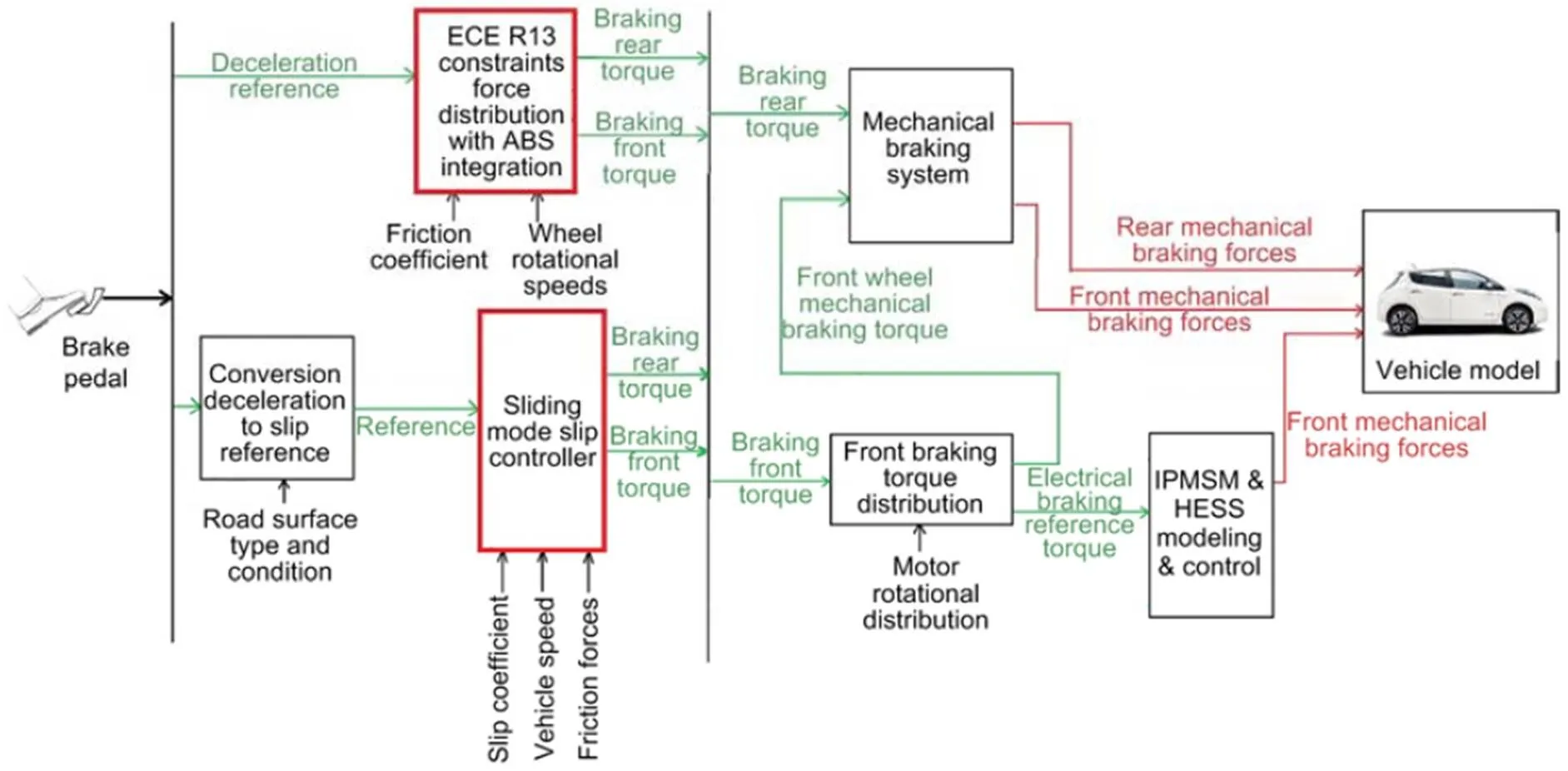
Fig. 8 Two-braking control strategy used in vehicles. Reprinted from (Itani et al., 2016), Copyright 2016, with permission from Elsevier. ECE: Economic Commission for Europe; ABS: anti-lock braking system; IPMSM: interior permanent magnet synchronous motor; HESS: hybrid energy storage system
3 Hybrid electric drive system (HEDS)
3.1 Structures and control strategy of HEDS
HEDS combines different kinds of power systems to complete the operating demand for CM with improved overall performance. Fuel consumption and exhaust gas emissions of CM can be decreased by the adoption of HEDS (Hannan et al., 2014; Tong et al., 2020a). Currently there are three mainstream types of HEDS (Enang and Bannister, 2017): series, parallel, and hybrid, as shown in Fig. 9. In the series structure HEDS, power is transmitted to the mechanical drive unit only by the electric motor, offering the advantage of both high fuel efficiency and easy operation. However, the control strategy of the series structure is difficult to develop for optimal efficiency of the entire system (He and Jiang, 2018). The parallel structure has a dynamic coupling device that integrates the power from the ICE with that from the electric motor. The electric motor is used as the auxiliary power device, and the battery pack is used as its energy storage element (Conte et al., 2014; Lü et al., 2018; Tong et al., 2020b). The effective switching of the power supply modes between the different working conditions makes the engine working in the most efficient and economical way possible. As shown in Fig. 9c, the hybrid structure is designed on the series structure and parallel structure (Wang et al., 2015), making the system a more flexible strategy.
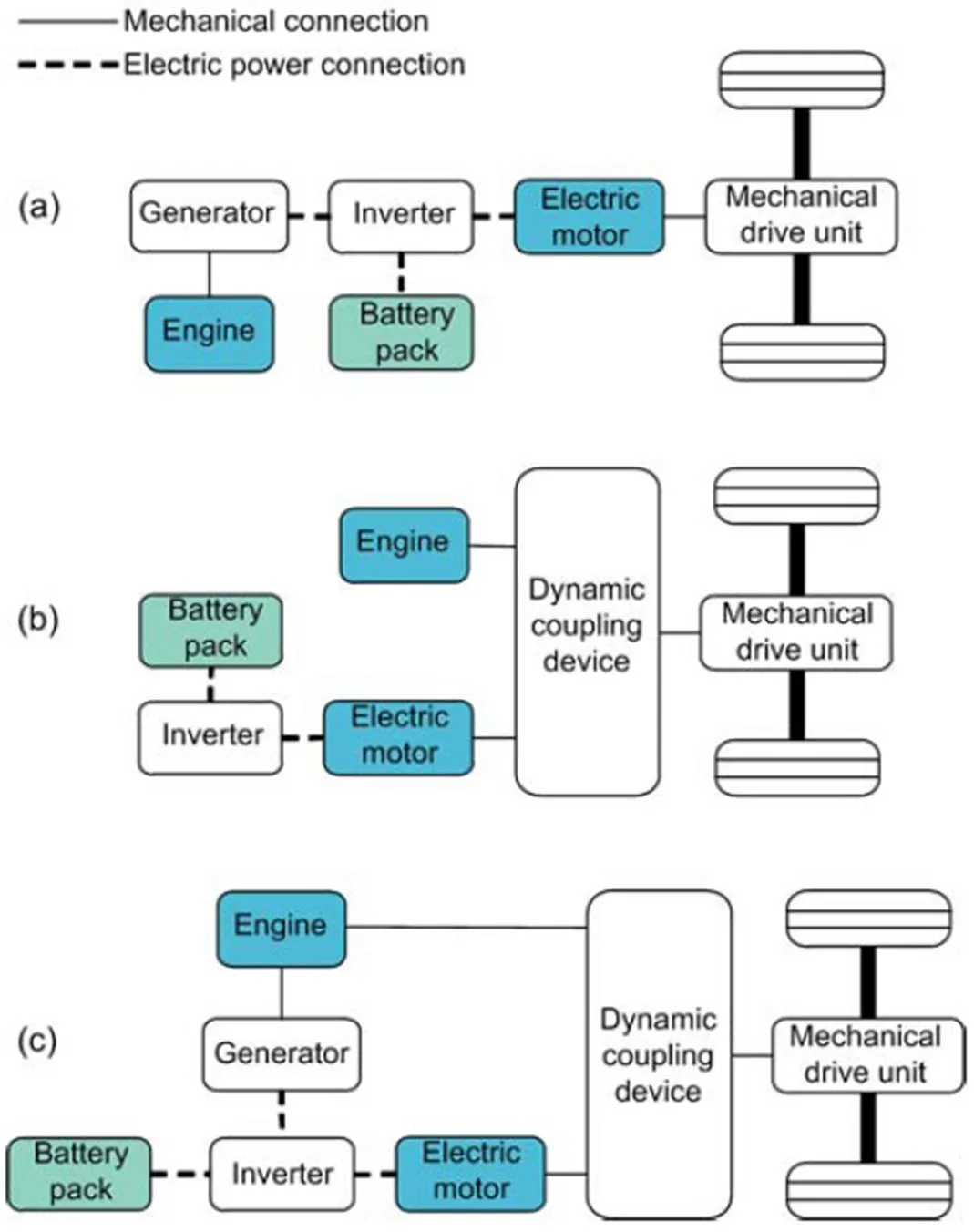
Fig. 9 Structures of mainstream hybrid power systems
(a) Series structure; (b) Parallel structure; (c) Hybrid structure
3.2 Parameter matching technology of hybrid electric construction machinery (HECM)
The basic principle of the hybrid power system is to reduce fuel consumption through the combination of electric motors and ICEs (Wang et al., 2013). The parameter matching between the different power units has a significant influence on power performance, fuel consumption, and exhaust gas emissions of CM (Xu et al., 2018). The energy flow directions in the HECM are shown in Fig. 10.
Parameter matching is one of the most critical issues in the research on HECM (Song et al., 2020). A parameter matching strategy should comprehensively consider the changes of the external load, as well as the characteristics of each component in the power system (Sun and Jing, 2010). In recent years, simulation technology has become the most efficient method for addressing parameter matching. Li et al. (2013) proposed a new parameter matching strategy for improving the performance of the hybrid power loader. The optimal parameters were discovered through the development of an objective function and a constraint function. The performance of the new strategy is demonstrated by using the MATLAB/Simulink software. Ke et al. (2020) established a state-of-charge estimation strategy of ESU for parameter matching of an electric excavator. Sun (2020) developed a comprehensive model combined with 19 components for a hybrid electric vehicle (HEV) by utilizing the advanced vehicle simulator (ADVISOR) and MATLAB/Simulink software. The critical components, including engine, electric motor, battery, and transmission, were selected according to historical experience. Parameter matching was realized by considering the power requirements of the system and then optimized by a multi-objective cellular genetic algorithm. Wang (2020) proposed a new strategy of parameter matching for an electric vehicle according to its power requirements. The ESUs of the vehicle consist of fuel cell, battery, and ultra-capacitor. Xiao (2020) optimized the system parameters of the plug-in hybrid electric vehicle (PHEV) by forward simulation. The power requirements of these systems are shown in Fig. 11.
The continuing development of hybrid CM needs to address the following key issues:
1. The optimal distribution of energy and reasonable parameter matching of the hybrid power system. In contrast to passenger vehicles, the working conditions of CM are more complicated, which makes the power output mode of hybrid power and control strategy more complicated and more demanding. Besides, the power system of HECM is more complicated compared with PECM, which makes parameter matching very difficult.
2. Reducing the cost of the hybrid system. The use of hybrid power systems on CM greatly increases the cost, which also increases the difficulty of promoting hybrid products.

Fig. 10 Energy flow directions in the hybrid system
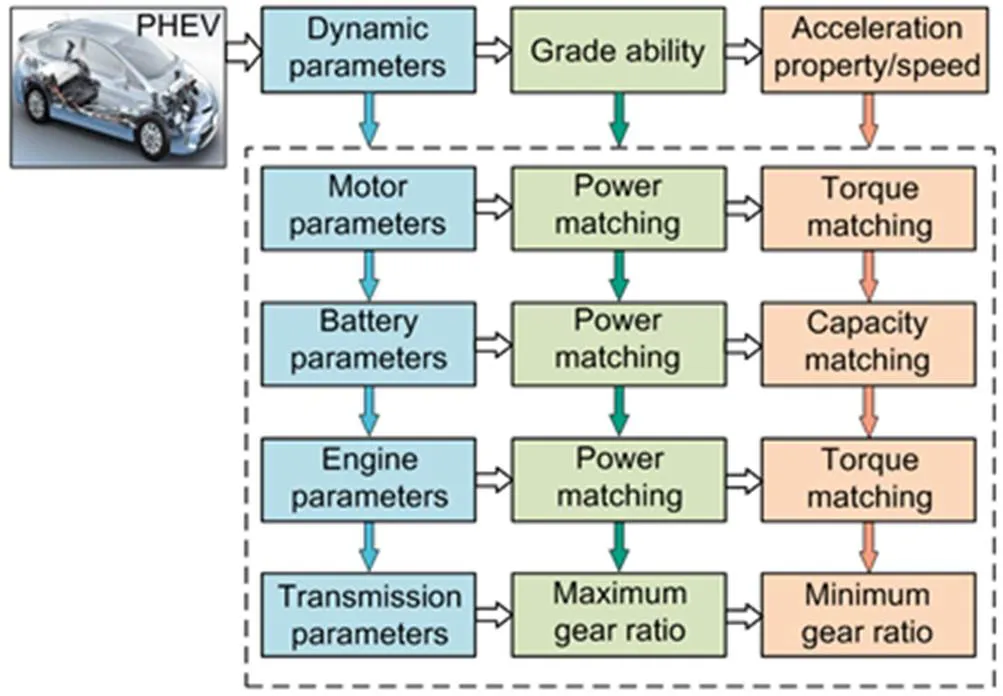
Fig. 11 Classification of system power requirements for PHEV
4 Battery management system (BMS)
The BMS used for PEDS and HEDS has the same design. For ECM, it is important to ensure a reliable energy supply. In recent years, the battery has gradually replaced other kinds of energy sources and been applied to CM, since the battery has high energy density and a long lifespan. However, the electrochemical performance of the battery will decrease as defects are generated after many charge-discharge cycles (Xiong et al., 2018). Additionally, many stress factors (e.g. temperature, depth of discharge (DOD), and charge-discharge rate) that alter the transport rate of lithium ions and the rates of electrochemical reactions will affect lifespan significantly (Hu et al., 2020). Extreme environments such as low-temperature cold storage can lead to serious consequences (e.g. the CM cannot be started or loses power when cargo is carried). Therefore, the health of the battery needs to be monitored for reliable energy supply, and timely maintenance, a favorable environment, and a reasonable charge-discharge strategy are also required to prolong the lifespan of the battery. The BMS can realize those functions and its structure is depicted in Fig. 12.
4.1 Prognostics of battery operating states
As one of the most significant functions of BMS, battery health states (e.g. remaining useful life (RUL), state of health (SOH), and state of charge (SOC)) prognostics have attracted the attention of researchers. The electrochemical performance of batteries has increased rapidly and their cost is decreasing with the appearance of new materials (Zhang WD et al., 2019; Zhang QG et al., 2020). In 2007 (Saha and Goebel, 2007), a battery would come to the end of its life within 168 cycles under a 0.75–1-C charge-discharge rate. In contrast, today the capacity of a battery only declines 4% after 1000 cycles with a 3.6-C charge- discharge rate (Severson et al., 2019). In practice, researchers usually develop an accelerated aging test to shorten test cycles as battery life is significantly affected by the operating parameters. In recent years, several kinds of algorithms, including the model- based method, data-driven method, and hybrid method, have been proposed to estimate health states. The advantages and disadvantages of popular algorithms are summarized in Table 4. Note that the computational cost of the models is being gradually reduced due to information technology continuing to evolve rapidly, such as 5G. Based on advanced information technology, BMS can estimate battery states efficiently and even download a large amount of battery data from a cloud data center to develop a more precise model; all computation can be finished within an acceptable period. In recent years, machine learning-based algorithms for prediction of battery performance have become more and more popular. The artificial neural networks such as long-short term memory (LSTM) neural network (Zhang YZ et al., 2018), feed forward neural network (Wu et al., 2016), and convolutional neural network (Ma et al., 2019) have been widely applied to predict battery operating states. These methods can accurately model battery behavior and exhibit excellent adaptability since a large amount of data is available. In addition, better prediction performance will be obtained when the artificial neural network is combined with other kinds of methods (Yang et al., 2020; Ma et al., 2021).
At present, there are still many issues for battery prognostics in CM:
1. Data acquisition. Many researchers use battery data from public datasets to develop prediction algorithms, but those are not suitable for CM applications. In addition, most battery data is collected in a laboratory environment (e.g. constant charge-discharge rate and constant temperature), which does not accurately reflect the actual application environment.
2. Generalization ability. It is important to apply the appropriate diagnostic algorithm to differing operating conditions and for various kinds of batteries. However, most research focuses on a few conditions and one or two types of batteries. In a recent work, Severson et al. (2019) developed a data-driven estimation method based on a comprehensive dataset that included 124 commercial lithium-ion batteries. The batteries were operated at different charge-discharge rates, and their lifespans ranged from 150 to 2300 cycles.

Fig. 12 Structure and functions of a typical BMS
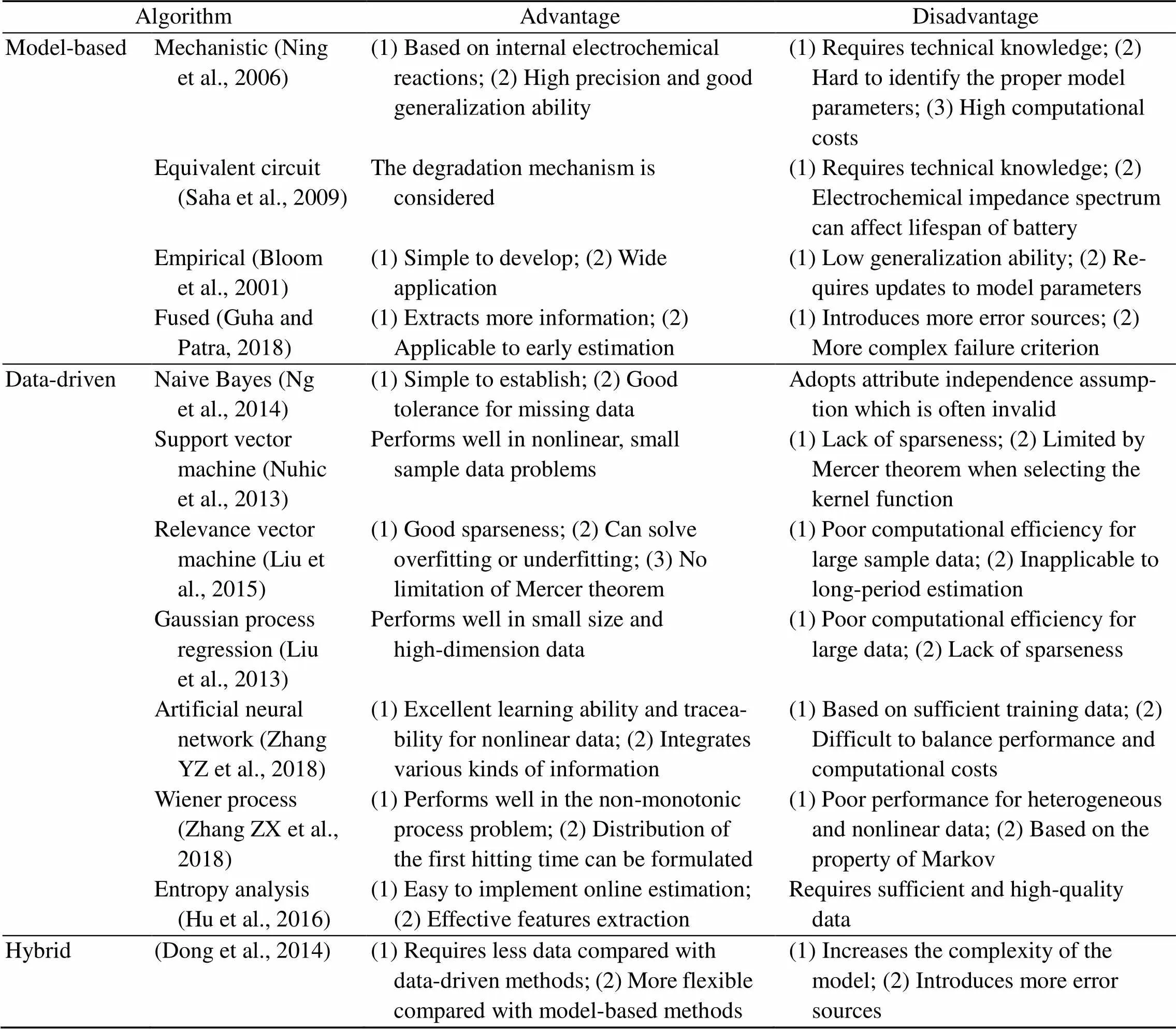
Table 4 Advantages and disadvantages of popular algorithms for battery state prediction
3. Evaluation criterion. The performance indicators of algorithms can be classified as accuracy, robustness, generalization ability, and computational costs (including time costs and hardware requirements). For precision evaluation, indicators such as mean absolute error (MAE), mean square error (MSE), and root mean square error (RMSE) are widely utilized. For other performance indicators, however, there are no available quantitative criteria to evaluate prediction algorithms. Therefore, it is difficult to identify the comprehensive properties of the model.
4.2 Thermal management system (TMS)
An appropriate environment can be established by the TMS to maintain the highest performance of batteries no matter where the CM is operated. In contrast to automobiles, CM is more likely to be used in high-temperature or extremely cold environments. Batteries will be especially affected by abnormal temperatures without the TMS. The TMS can be divided into four categories, i.e. the air-based method, liquid-based method, material-based method, and fusion method, and a TMS also can be passive or active (Rao and Wang, 2011). The schemes for air-based and liquid-based methods are shown in Fig. 13. The material-based method uses the characteristics of phase change materials (PCMs), which have high conductivity for high temperature and low conductivity for low temperature. Therefore, the PCM can be used for either dissipating heat or preserving the heat of the battery pack.
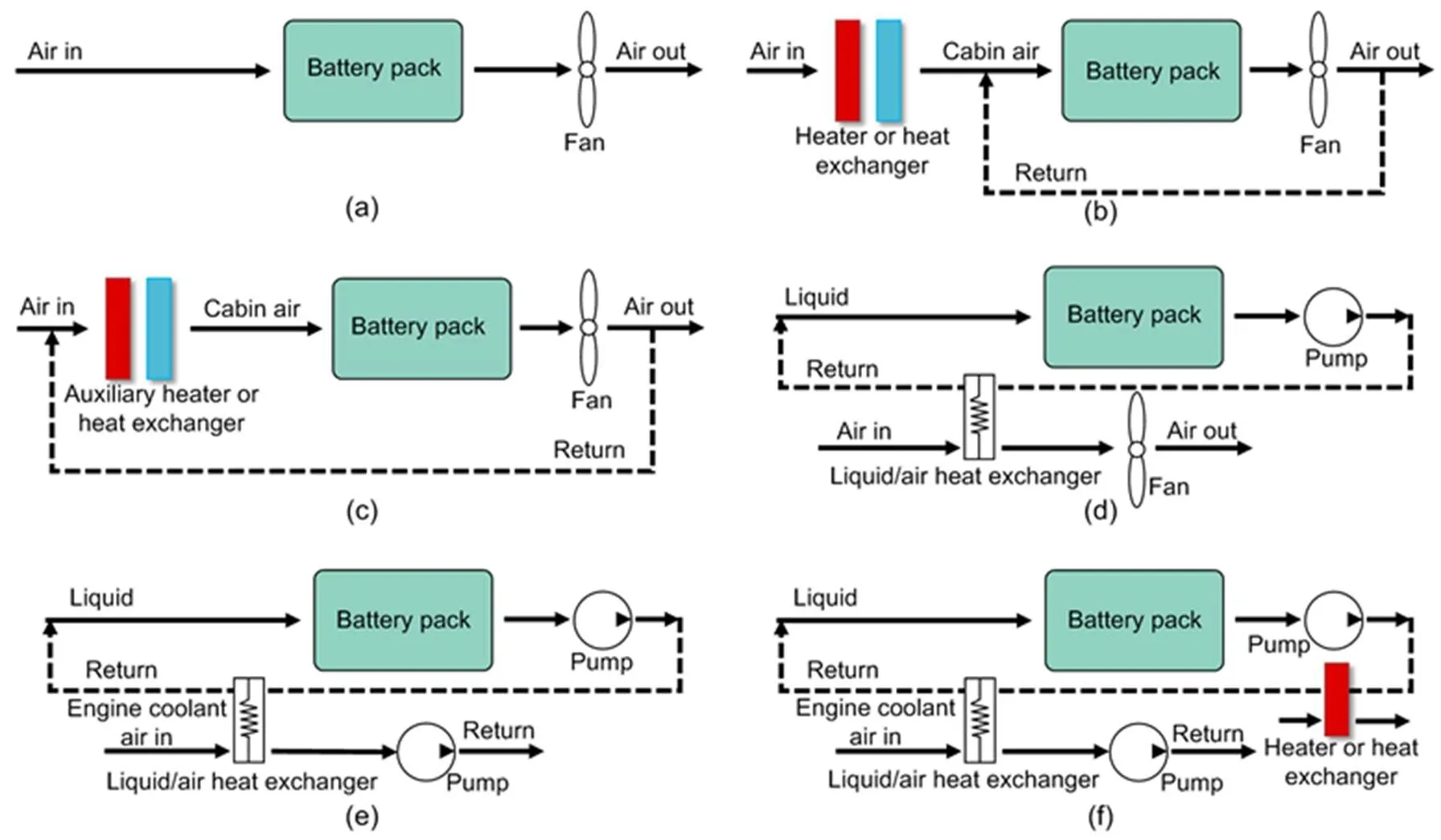
Fig. 13 Schemes for air-based and liquid-based TMSs
(a) Passive air cooling; (b) Passive air cooling or heating; (c) Active air cooling or heating; (d) Passive liquid cooling; (e) Active moderate cooling or heating; (f) Active cooling at a high temperature or heating at a cold temperature
The scheme for the TMS will be affected by many factors such as the type of battery (cylindric, prismatic, elliptic) and the structure of CM (Al-Hallaj and Selman, 2002). The TMS used in a five-chair electric vehicle is depicted in Fig. 14. The system utilizes a heat pump to develop a cooling and heating loop. Zolot et al. (2002) developed a parallel airflow TMS for cooling the battery pack in a hybrid vehicle. Wang et al. (2014) investigated the influence of cell distribution and fan locations. The results showed that the best cooling performance was realized when the fan was located on top of the batteries.
5 Environmental benefits of ECM in China
According to the U.S. Energy Information Administration (EIA, 2017), the construction industry is responsible for 11% of energy-related carbon emissions globally. Most CMs are diesel-powered, and emit significantly more pollutants than those from automobiles, including particulate matter (PM), nitrogen oxides (NO), and hydrocarbons (HC). To accomplish reductions in emissions, China has been continuously enacting stricter emission standards for non-road CM since they were first issued in 2007. The new China IV emission standard for non-road CMs will be officially implemented in 2022. Furthermore, as many countries have policies for banning the sale of fossil-fuel powered vehicles in the future, it is also likely that countries will be planning to ban the sale of CM with conventional fuel at some point. As such, electrification of CM has already become an inevitable technological trend because of its massive environmental benefits. To provide reference for government and CM manufacturers, the CM emissions in China (2016–2020 and 2030) are roughly estimated here based on the emission factors of each pollutant (PM, NO, HC) and annual fuel consumptions. We employed average non-road CM emission factors to estimate annual emissions according to the non-road emission inventory guidelines released by the Ministry of Ecology and Environment of the People’s Republic of China (MEE) (MEE, 2019). The fuel consumption rate was obtained based on the testing data of different types of CMs under typical operating modes (Hu et al., 2019). The estimated national total emissions of each pollutant are shown in Fig. 15. In comparison with the emission data released in the China vehicle environmental management annual report by MEE, our predictions are in decent agreement with differences less than 20%. For example, in 2019, the national total emissions for HC, NO, and PM were 140 169 t, 1 412 525 t, and 90 458 t, respectively. Considerable decreases in all three pollutants are observed from 2016 to 2020 due to the implementation of exhaust after-treatment technologies such as diesel oxidation catalysts (DOCs), diesel particulate filters (DPFs), and selective catalytic reduction (SCR) catalysts. Additionally, we have predicted the total emission in 2030 based on the assumption that all existing CMs comply with non-road China IV standard and 20% of in-use CMs in China will be electric with zero emission. The national total emissions for HC, NO, and PM in 2030 are forecast to be 62 700 t, 1 089 000 t, and 8250 t, respectively (Fig. 15). Although the number of in-use CMs is assumed to grow steadily from 2020 to 2030, the predicted total emissions for all pollutants will still be less than the level of 2020 especially for PM, due to the replacement of pre-China IV CMs with China IV CMs equipped with more advanced after-treatment technologies as well as with a significant number of ECMs. In short, we have shown that the implementation of ECM in China shows considerable environmental benefits, and more government incentives are encouraged to further motivate CM manufacturers in developing more ECM models for the Chinese market.
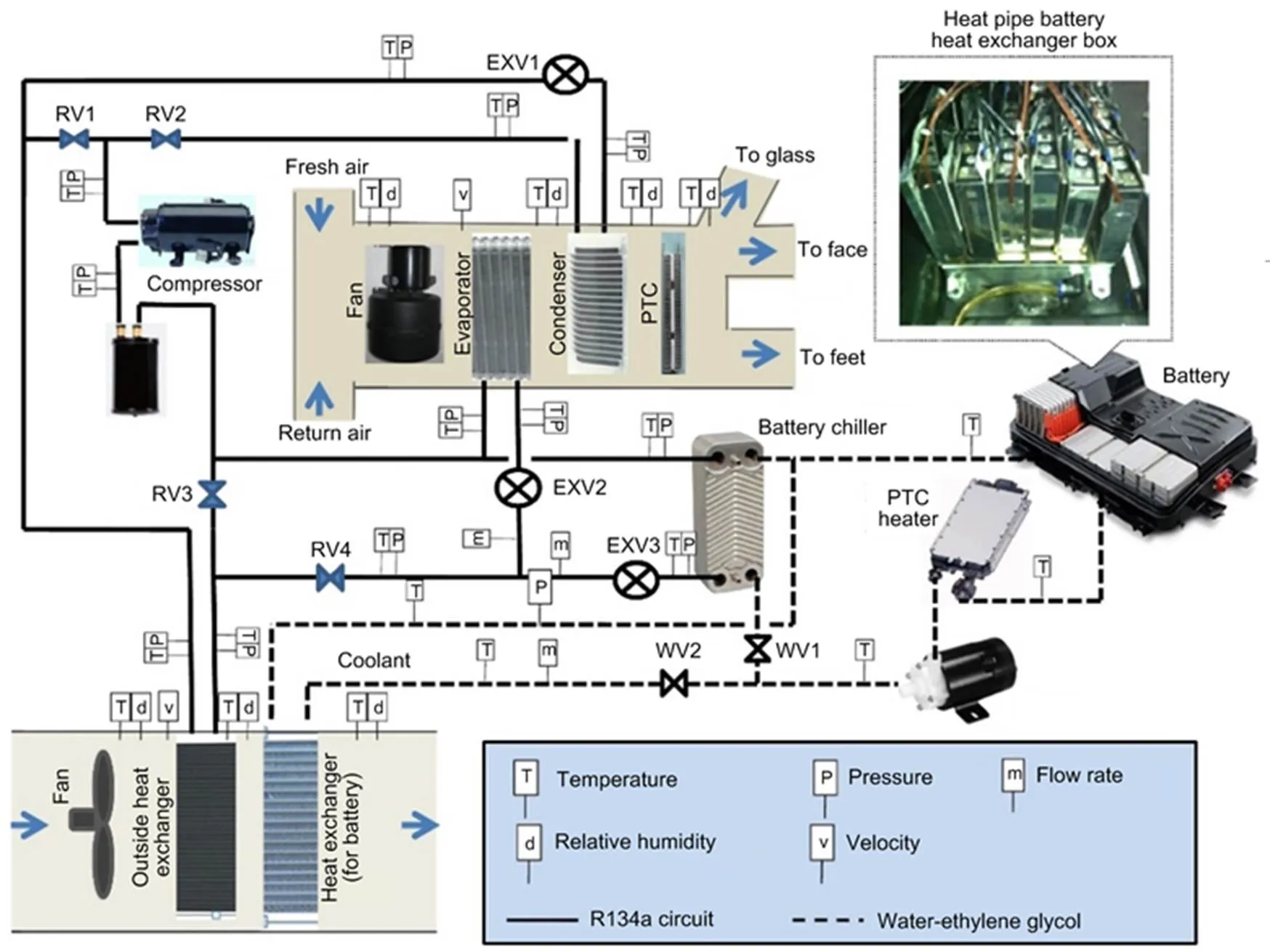
Fig. 14 Structure of the TMS used in an electric vehicle. Reprinted from (Zou et al., 2016), Copyright 2016, with permission from Elsevier. PTC: positive temperature coefficient; EXV: expansion valve; RV: refrigerant valve
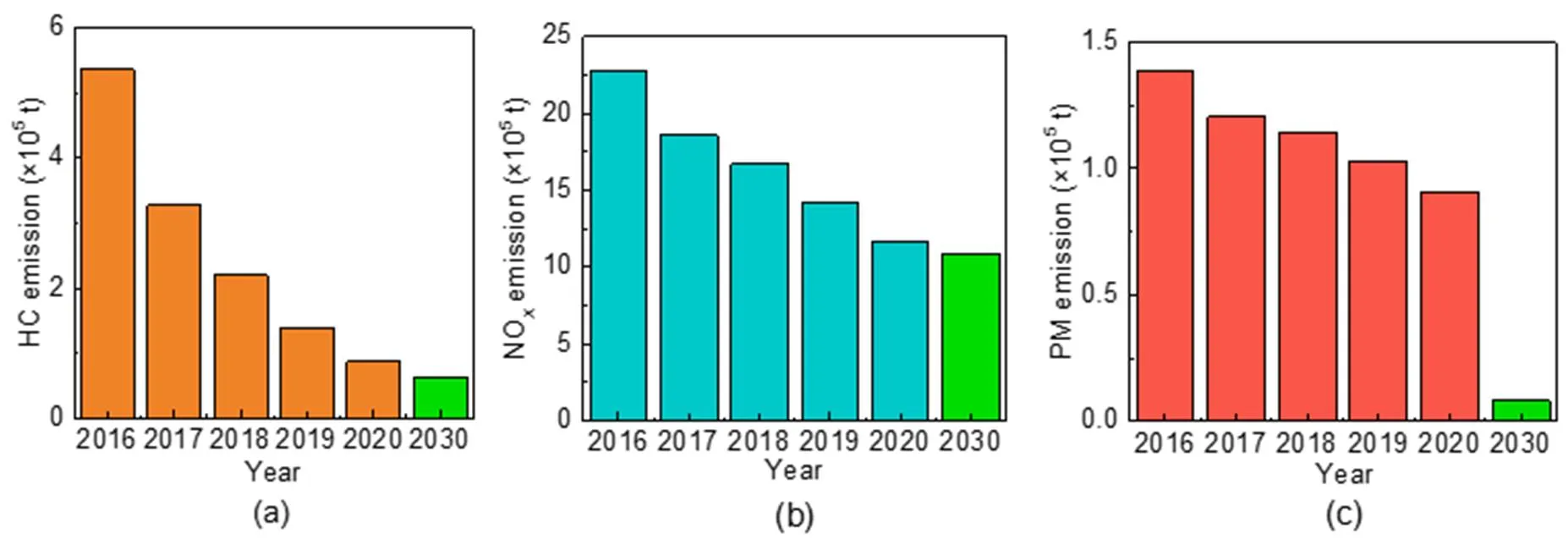
Fig. 15 Estimated national total CM emissions in China (2016-2020 and 2030)
(a) HC; (b) NO; (c) PM
6 Conclusions
Traditional CM no longer satisfies the demand for energy saving and environmental protection. The development of ECM that utilizes clean and renewable energy is of great importance in the CM industry. In this review, key technologies of PEDS and HEDS were discussed for the design of ECM. Due to harsh operation conditions, ECMs, such as the mining truck and excavator, demand high battery performance with long cycle life, fast charging speed, and stable current output. As the electrochemical performance of batteries continues to improve, BMS design for ECM becomes more and more prominent and therefore we have included a deep discussion on existing BMS technologies. In addition, we roughly estimated the national total CM emissions from 2016 to 2020 and the potential environmental benefits of employing ECMs by 2030.
With increasing regulations on emission control and the promotion of clean energy, the market of ECMs in China has been rapidly expanding. Top CM players such as SANY and LiuGong have already made a significant effort in the progress of electrification through several strategic collaborations with Contemporary Amperex Technology Co., Limited (CATL), a leading battery manufacturer in China. In addition, the rapid development of information technology, e.g. artificial intelligence, internet of things, and 5G is transforming the CM industry. Many new ECM models are already equipped with online data transmission features. To improve operation safety and efficiency, companies such as XCMG and Hangcha are developing technologies to achieve autonomous driving and real-time communications with road infrastructure and warehouses.
Contributors
Zhe-ming TONG and Jia-zhi MIAO designed the research and wrote the first draft of the manuscript. Yuan-song LI and Shui-guang TONG conducted the literature review. Qian ZHANG and Gui-rong TAN processed the data. Shui-guang TONG revised the final version and provided the funding support.
Conflict of interest
Zhe-ming TONG, Jia-zhi MIAO, Yuan-song LI, Shui- guang TONG, Qian ZHANG, and Gui-rong TAN declare that they have no conflict of interest.
Al-Hallaj S, Selman JR, 2002. Thermal modeling of secondary lithium batteries for electric vehicle/hybrid electric vehicle applications., 110(2):341- 348. https://doi.org/10.1016/S0378-7753(02)00196-9
Ambühl D, Sundström O, Sciarretta A, et al., 2010. Explicit optimal control policy and its practical application for hybrid electric powertrains., 18(12):1429-1439. https://doi.org/10.1016/j.conengprac.2010.08.003
Antonelli M, Ceraolo M, Desideri U, et al., 2017. Hybridization of rubber tired gantry (RTG) cranes., 12:186-195. https://doi.org/10.1016/j.est.2017.05.004
Bloom I, Cole BW, Sohn JJ, et al., 2001. An accelerated calendar and cycle life study of Li-ion cells., 101(2):238-247. https://doi.org/10.1016/S0378-7753(01)00783-2
Boglietti A, Cavagnino A, Pastorelli M, et al., 2006. Thermal analysis of induction and synchronous reluctance motors., 42(3):675- 680. https://doi.org/10.1109/TIA.2006.873668
Cao XY, Ming FR, Zhang AM, 2014. Sloshing in a rectangular tank based on SPH simulation., 47:241-254. https://doi.org/10.1016/j.apor.2014.06.006
Chen QH, Lin TL, Ren HL, et al., 2019. Novel potential energy regeneration systems for hybrid hydraulic excavators., 163:130-145. https://doi.org/10.1016/j.matcom.2019.02.017
Conte M, Genovese A, Ortenzi F, et al., 2014. Hybrid battery-supercapacitor storage for an electric forklift: a life-cycle cost assessment., 44(4):523-532. https://doi.org/10.1007/s10800-014-0669-z
Dong HC, Jin XN, Lou YB, et al., 2014. Lithium-ion battery state of health monitoring and remaining useful life prediction based on support vector regression-particle filter., 271:114-123. https://doi.org/10.1016/j.jpowsour.2014.07.176
EIA (U.S. Energy Information Administration), 2017. International Energy Outlook. U.S. Department of Energy, Washington, USA.
Enang W, Bannister C, 2017. Modelling and control of hybrid electric vehicles (a comprehensive review)., 74:1210-1239. https://doi.org/10.1016/j.rser.2017.01.075
Ferreira FJTE, de Almeida AT, 2018. Reducing energy costs in electric-motor-driven systems: savings through output power reduction and energy regeneration., 24(1):84-97. https://doi.org/10.1109/MIAS.2016.2600685
Filla R, 2009. Hybrid power systems for construction machinery: aspects of system design and operability of wheel loaders. ASME International Mechanical Engineering Congress and Exposition, p.611-620. https://doi.org/10.1115/IMECE2009-10458
Ge L, Quan L, Zhang XG, et al., 2017. Efficiency improvement and evaluation of electric hydraulic excavator with speed and displacement variable pump., 150:62-71. https://doi.org/10.1016/j.enconman.2017.08.010
Ge L, Quan L, Li YW, et al., 2018. A novel hydraulic excavator boom driving system with high efficiency and potential energy regeneration capability., 166:308-317. https://doi.org/10.1016/j.enconman.2018.04.046
Guha A, Patra A, 2018. State of health estimation of lithium-ion batteries using capacity fade and internal resistance growth models., 4(1):135-146. https://doi.org/10.1109/TTE.2017.2776558
Hannan MA, Azidin FA, Mohamed A, 2014. Hybrid electric vehicles and their challenges: a review., 29:135-150. https://doi.org/10.1016/j.rser.2013.08.097
Hannan MA, Hoque MM, Mohamed A, et al., 2017. Review of energy storage systems for electric vehicle applications: issues and challenges., 69:771-789. https://doi.org/10.1016/j.rser.2016.11.171
He XY, Jiang Y, 2018. Review of hybrid electric systems for construction machinery., 92: 286-296. https://doi.org/10.1016/j.autcon.2018.04.005
Hosseinzadeh E, Rokni M, Advani SG, et al., 2013. Performance simulation and analysis of a fuel cell/battery hybrid forklift truck., 38(11):4241-4249. https://doi.org/10.1016/j.ijhydene.2013.01.168
Hsieh CY, Nguyen XV, Weng FB, et al., 2016. Design and performance evaluation of a PEM fuel cell–lithium battery–supercapacitor hybrid power source for electric forklifts., 11(12):10449-10461. https://doi.org/10.20964/2016.12.56
Hu QY, Huang C, Qiao LP, et al., 2019. Speciated PM composition and gas and particle emission factors for diesel construction machinery in China., 19(8):1820-1833. https://doi.org/10.4209/aaqr.2018.07.0272
Hu XS, Jiang JC, Cao DP, et al., 2016. Battery health prognosis for electric vehicles using sample entropy and sparse Bayesian predictive modeling., 63(4):2645-2656. https://doi.org/10.1109/TIE.2015.2461523
Hu XS, Xu L, Lin XK, et al., 2020. Battery lifetime prognostics., 4(2):310-346. https://doi.org/10.1016/j.joule.2019.11.018
Itani K, de Bernardinis A, Khatir Z, et al., 2016. Comparison between two braking control methods integrating energy recovery for a two-wheel front driven electric vehicle., 122:330-343. https://doi.org/10.1016/j.enconman.2016.05.094
Jacobs S, Hectors D, Henrotte F, et al., 2009. Magnetic material optimization for hybrid vehicle PMSM drives., 3(4):875-883. https://doi.org/10.3390/wevj3040875
Ke J, Li B, Zhang XC, et al., 2020. Design of a new battery excavator and the matching of the parameters of the power system., (6): 113-116 (in Chinese). https://doi.org/10.19356/j.cnki.1001-3997.2020.06.028
KHL, 2020. Yellow Table 2020. KHL Group. https://www.khl.com/premium-content/yellow-table-2020/144712.article
Krasucki J, Rostkowski A, Gozdek Ł, et al., 2009. Control strategy of the hybrid drive for vehicle mounted aerial work platform., 18(2):130- 138. https://doi.org/10.1016/j.autcon.2008.05.008
Kumar L, Jain S, 2014. Electric propulsion system for electric vehicular technology: a review., 29:924-940. https://doi.org/10.1016/j.rser.2013.09.014
Li JS, Zhao JY, Zhang XC, 2020. A novel energy recovery system integrating flywheel and flow regeneration for a hydraulic excavator boom system., 13(2):315. https://doi.org/10.3390/en13020315
Li TY, Zhao DX, Kang HL, et al., 2013. Parameter matching of parallel hybrid power loaders., 43(4):916- 921 (in Chinese). https://doi.org/10.7964/jdxbgxb201304012
Lin TL, Huang WP, Ren HL, et al., 2016. New compound energy regeneration system and control strategy for hybrid hydraulic excavators., 68:11-20. https://doi.org/10.1016/j.autcon.2016.03.016
Lin TL, Wang L, Huang WP, et al., 2017a. Performance analysis of an automatic idle speed control system with a hydraulic accumulator for pure electric construction machinery., 84:184-194. https://doi.org/10.1016/j.autcon.2017.09.001
Lin TL, Chen Q, Ren HL, et al., 2017b. Review of boom potential energy regeneration technology for hydraulic construction machinery., 79:358-371. https://doi.org/10.1016/j.rser.2017.05.131
Lin TL, Lin YZ, Ren HL, et al., 2020. Development and key technologies of pure electric construction machinery., 132: 110080. https://doi.org/10.1016/j.rser.2020.110080
Liu DT, Pang JY, Zhou JB, et al., 2013. Prognostics for state of health estimation of lithium-ion batteries based on combination Gaussian process functional regression., 53(6):832-839. https://doi.org/10.1016/j.microrel.2013.03.010
Liu DT, Zhou JB, Pan DW, et al., 2015. Lithium-ion battery remaining useful life estimation with an optimized relevance vector machine algorithm with incremental learning., 63:143-151. https://doi.org/10.1016/j.measurement.2014.11.031
Lü XQ, Qu Y, Wang YD, et al., 2018. A comprehensive review on hybrid power system for PEMFC-HEV: issues and strategies., 171: 1273-1291. https://doi.org/10.1016/j.enconman.2018.06.065
Ma GJ, Zhang Y, Cheng C, et al., 2019. Remaining useful life prediction of lithium-ion batteries based on false nearest neighbors and a hybrid neural network., 253:113626. https://doi.org/10.1016/j.apenergy.2019.113626
Ma J, Shang PC, Zou XY, et al., 2021. A hybrid transfer learning scheme for remaining useful life prediction and cycle life test optimization of different formulation Li-ion power batteries., 282:116167. https://doi.org/10.1016/j.apenergy.2020.116167
MEE (Ministry of Ecology and Environment of the People’s Republic of China), 2019. China Vehicle Environmental Management Annual Report. MEE, Beijing, China (in Chinese).
Miao JZ, Guo ZW, Yuan CQ, 2017. Effect of textured surface on the friction performance of cylinder liner-piston ring system in the internal combustion engine., 37(4):465-471 (in Chinese). https://doi.org/10.16078/j.tribology.2017.04.007
Minav TA, Pyrhonen JJ, Laurila LIE, 2012a. Permanent magnet synchronous machine sizing: effect on the energy efficiency of an electro-hydraulic forklift., 59(6):2466-2474. https://doi.org/10.1109/TIE.2011.2148682
Minav TA, Virtanen A, Laurila L, et al., 2012b. Storage of energy recovered from an industrial forklift., 22:506-515. https://doi.org/10.1016/j.autcon.2011.11.010
Mourelatos ZP, 2001. A crankshaft system model for structural dynamic analysis of internal combustion engines., 79(20-21):2009-2027. https://doi.org/10.1016/S0045-7949(01)00119-5
Ng SSY, Xing YJ, Tsui KL, 2014. A naive Bayes model for robust remaining useful life prediction of lithium-ion battery., 118:114-123. https://doi.org/10.1016/j.apenergy.2013.12.020
Ning G, White RE, Popov BN, 2006. A generalized cycle life model of rechargeable Li-ion batteries., 51(10):2012-2022. https://doi.org/10.1016/j.electacta.2005.06.033
Nuhic A, Terzimehic T, Soczka-Guth T, et al., 2013. Health diagnosis and remaining useful life prognostics of lithium- ion batteries using data-driven methods., 239:680-688. https://doi.org/10.1016/j.jpowsour.2012.11.146
Ovrum E, Bergh TF, 2015. Modelling lithium-ion battery hybrid ship crane operation., 152:162- 172. https://doi.org/10.1016/j.apenergy.2015.01.066
Paul T, Mesbahi T, Durand S, et al., 2020. Sizing of lithium-ion battery/supercapacitor hybrid energy storage system for forklift vehicle., 13(17):4518. https://doi.org/10.3390/en13174518
Rao ZH, Wang SF, 2011. A review of power battery thermal energy management., 15(9):4554-4571. https://doi.org/10.1016/j.rser.2011.07.096
Saha B, Goebel K, 2007. Battery Data Set, NASA Ames Prognostics Data Repository. NASA Ames Research Center, Moffett Field, USA.https://ti.arc.nasa.gov/tech/dash/groups/pcoe/prognostic-data-repository/#battery
Saha B, Goebel K, Poll S, et al., 2009. Prognostics methods for battery health monitoring using a Bayesian framework., 58(2):291-296. https://doi.org/10.1109/TIM.2008.2005965
Severson KA, Attia PM, Jin N, et al., 2019. Data-driven prediction of battery cycle life before capacity degradation., 4(5):383-391. https://doi.org/10.1038/s41560-019-0356-8
Song PX, Lei YL, Fu Y, 2020. Multi-objective optimization and matching of power source for PHEV based on genetic algorithm., 13(5):1127. https://doi.org/10.3390/en13051127
Sun H, Jing JQ, 2010. Research on the system configuration and energy control strategy for parallel hydraulic hybrid loader., 19(2):213-220. https://doi.org/10.1016/j.autcon.2009.10.006
Sun H, Yang LF, Jing JQ, et al., 2011. Control strategy of hydraulic/electric synergy system in heavy hybrid vehicles., 52(1):668- 674. https://doi.org/10.1016/j.enconman.2010.07.045
Sun Y, 2020. Research on Parameter Matching and Optimization of Hybrid Electric Vehicle. MS Thesis, Shenyang Ligong University, Shenyang, China (in Chinese).
Tie SF, Tan CW, 2013. A review of energy sources and energy management system in electric vehicles., 20:82-102. https://doi.org/10.1016/j.rser.2012.11.077
Tong SG, He S, Tong ZM, et al., 2018. Dynamic and co-simulation of forklift frame and multi-objective optimization., 35(12):7-11 (in Chinese). https://doi.org/10.13841/j.cnki.jxsj.2018.12.002
Tong SG, Miao JZ, Tong ZM, et al., 2019. Finite element analysis and optimization for static and dynamic characteristics of diesel forklift frame., 53(9):1637-1646 (in Chinese). https://doi.org/10.3785/j.issn.1008-973X.2019.09.001
Tong ZM, Li Y, Westerdahl D, et al., 2019. Exploring the effects of ventilation practices in mitigating in-vehicle exposure to traffic-related air pollutants in China., 127:773-784. https://doi.org/10.1016/j.envint.2019.03.023
Tong ZM, Liu H, Ma JF, et al., 2020a. Investigating the performance of a super high-head Francis turbine under variable discharge conditions using numerical and experimental approach., 13(15):3868. https://doi.org/10.3390/en13153868
Tong ZM, Xin JG, Tong SG, et al., 2020b. Internal flow structure, fault detection, and performance optimization of centrifugal pumps., 21(2):85- 117. https://doi.org/10.1631/jzus.A1900608
Tong ZM, Wu SS, Tong SG, et al., 2020c. Energy-saving technologies for construction machinery: a review of electro-hydraulic pump-valve coordinated system., 21(5):331-349. https://doi.org/10.1631/jzus.A2000094
Tong ZM, Cheng ZW, Tong SG, 2021. A review on the development of compressed air energy storage in China: technical and economic challenges to commercialization., 135: 110178. https://doi.org/10.1016/j.rser.2020.110178
Wang EH, Guo D, Yang FY, 2015. System design and energetic characterization of a four-wheel-driven series–parallel hybrid electric powertrain for heavy-duty applications., 106:1264- 1275. https://doi.org/10.1016/j.enconman.2015.10.056
Wang H, Huang YJ, Khajepour A, et al., 2016. Model predictive control-based energy management strategy for a series hybrid electric tracked vehicle., 182:105-114. https://doi.org/10.1016/j.apenergy.2016.08.085
Wang HM, Wang QF, Hu BZ, 2017. A review of developments in energy storage systems for hybrid excavators., 80:1-10. https://doi.org/10.1016/j.autcon.2017.03.010
Wang JY, Cai L, Wang YW, et al., 2013. Modeling and optimization matching on drive system of a coaxial parallel- type hybrid-power gas engine heat pump., 55: 1196-1204. https://doi.org/10.1016/j.energy.2013.04.036
Wang T, Tseng KJ, Zhao JY, et al., 2014. Thermal investigation of lithium-ion battery module with different cell arrangement structures and forced air-cooling strategies., 134:229-238. https://doi.org/10.1016/j.apenergy.2014.08.013
Wang W, 2020. Research on Matching and Control Strategy of Hydrogen Fuel Cell Hybrid Power System for Vehicle. MS Thesis, North China University of Water Resources and Electric Power, Zhengzhou, China (in Chinese).
Wu J, Zhang CB, Chen ZH, 2016. An online method for lithium-ion battery remaining useful life estimation using importance sampling and neural networks., 173:134-140. https://doi.org/10.1016/j.apenergy.2016.04.057
Xiao S, 2020. Research on Parameter Matching and Energy Management Strategy of Powertrain of Plug-in Hybrid Electric Vehicle. MS Thesis, Zhejiang University of Technology, Hangzhou, China (in Chinese).
Xiong R, Sun FC, Chen Z, et al., 2014. A data-driven multi-scale extended Kalman filtering based parameter and state estimation approach of lithium-ion polymer battery in electric vehicles., 113:463-476. https://doi.org/10.1016/j.apenergy.2013.07.061
Xiong R, Li LL, Tian JP, 2018. Towards a smarter battery management system: a critical review on battery state of health monitoring methods., 405:18-29. https://doi.org/10.1016/j.jpowsour.2018.10.019
Xu QW, Mao YQ, Zhao M, et al., 2018. A hybrid electric vehicle dynamic optimization energy management strategy based on a compound-structured permanent-magnet motor., 11(9):2212. https://doi.org/10.3390/en11092212
Yang FF, Zhang SH, Li WH, et al., 2020. State-of-charge estimation of lithium-ion batteries using LSTM and UKF., 201:117664. https://doi.org/10.1016/j.energy.2020.117664
Yi HS, Jeong JB, Cha SW, et al., 2018. Optimal component sizing of fuel cell-battery excavator based on workload., 5(1):103-110. https://doi.org/10.1007/s40684-018-0011-z
Zhang JZ, Lv C, Qiu MZ, et al., 2013. Braking energy regeneration control of a fuel cell hybrid electric bus., 76:1117-1124. https://doi.org/10.1016/j.enconman.2013.09.003
Zhang QG, Tong ZM, Tong SG, 2020. Effect of cathode recirculation on high potential limitation and self-humidification of hydrogen fuel cell system., 468:228388. https://doi.org/10.1016/j.jpowsour.2020.228388
Zhang WD, Fan L, Tong ZM, et al., 2019. Stable Li-metal deposition via a 3D nanodiamond matrix with ultrahigh Young’s modulus., 3(11):1900325. https://doi.org/10.1002/smtd.201900325
Zhang YZ, Xiong R, He HW, et al., 2018. Long short-term memory recurrent neural network for remaining useful life prediction of lithium-ion batteries., 67(7):5695-5705. https://doi.org/10.1109/TVT.2018.2805189
Zhang ZX, Si XS, Hu CH, et al., 2018. Degradation data analysis and remaining useful life estimation: a review on Wiener-process-based methods., 271(3):775-796. https://doi.org/10.1016/j.ejor.2018.02.033
Zolot M, Pesaran AA, Mihalic M, 2002. Thermal Evaluation of Toyota Prius Battery Pack. SAE Technical Paper 2002-01-1962, SAE International, USA. https://doi.org/10.4271/2002-01-1962
Zou HM, Wang W, Zhang GY, et al., 2016. Experimental investigation on an integrated thermal management system with heat pipe heat exchanger for electric vehicle., 118:88-95. https://doi.org/10.1016/j.enconman.2016.03.066
https://doi.org/10.1631/jzus.A2100006
TM92
*Project supported by the National Key R&D Program of China (No. 2019YFB2004604), the National Natural Science Foundation of China (Nos. 52075481 and 52075477), the Zhejiang Provincial Natural Science Foundation of China (No. LR19E050002), the Key R&D Program of Zhejiang Province (No. 2020C01152), and the “Innovation 2025” Major Project of Ningbo (No. 2020Z110), China
Jan. 5, 2021;
Feb. 16, 2021;
Mar. 11, 2021
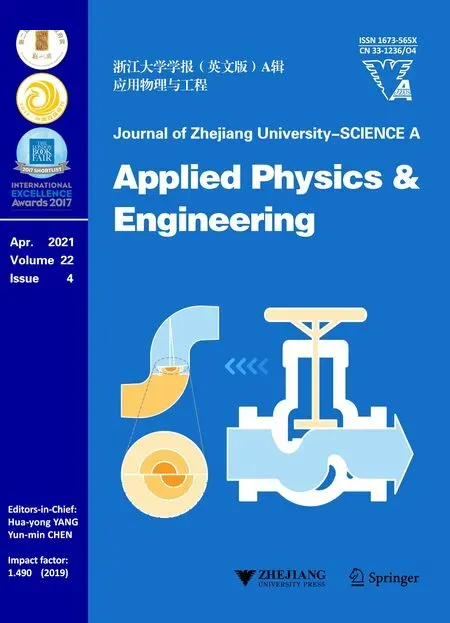 Journal of Zhejiang University-Science A(Applied Physics & Engineering)2021年4期
Journal of Zhejiang University-Science A(Applied Physics & Engineering)2021年4期
- Journal of Zhejiang University-Science A(Applied Physics & Engineering)的其它文章
- Pile foundation of high-speed railway undergoing repeated groundwater reductions*
- Analytical solutions to ground settlement induced by ground loss and construction loadings during curved shield tunneling*
- Stabilization mechanisms of lifted flames in a supersonic stepped-wall jet combustor*
- A parametric study on unbalanced moment of piston type valve core*
